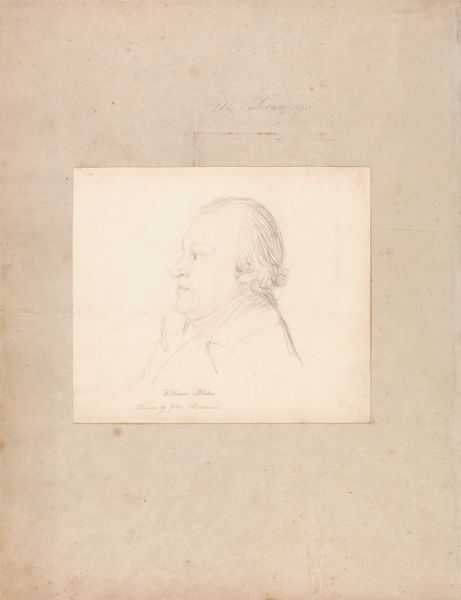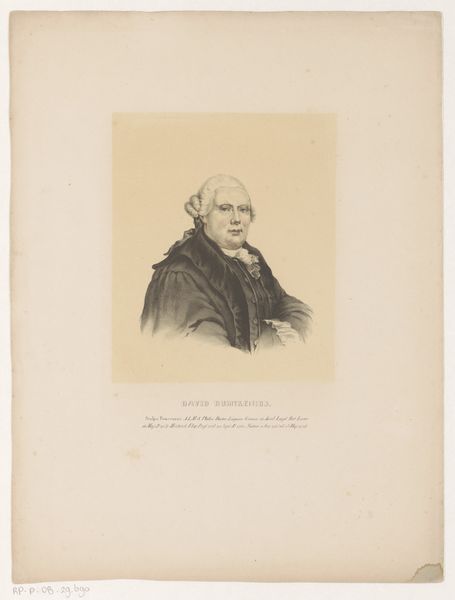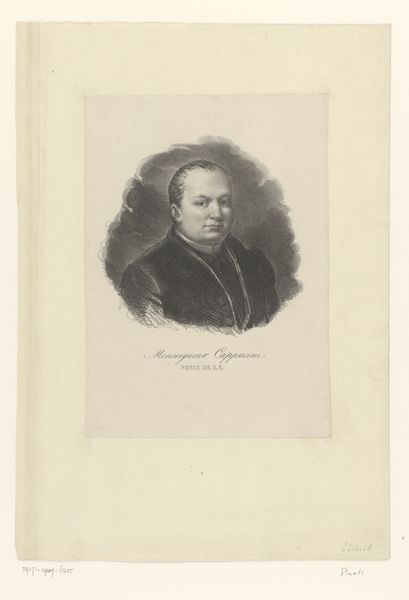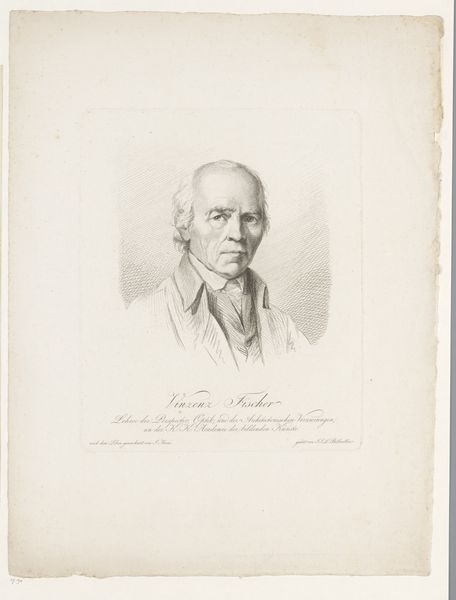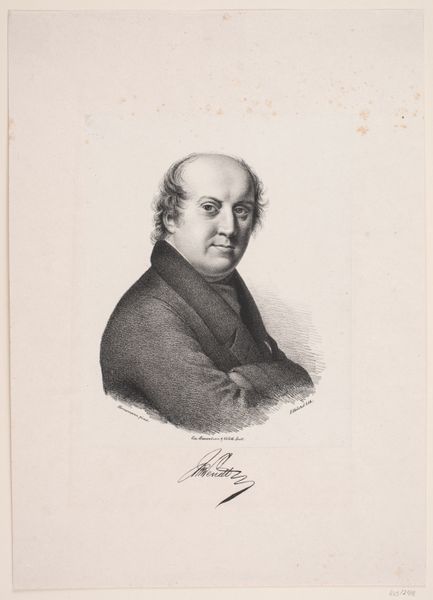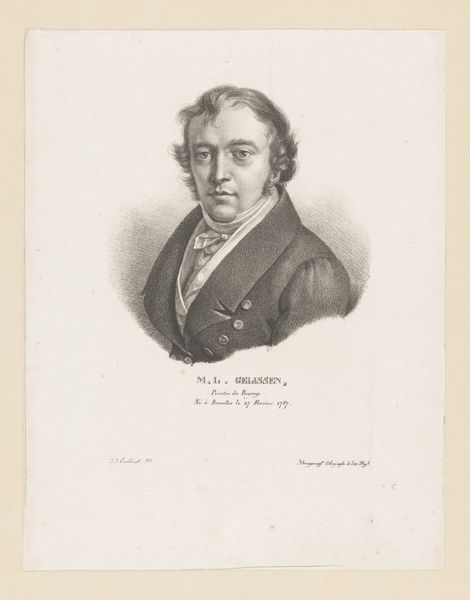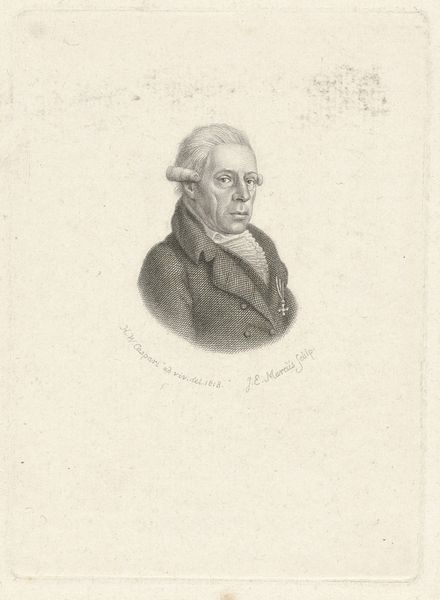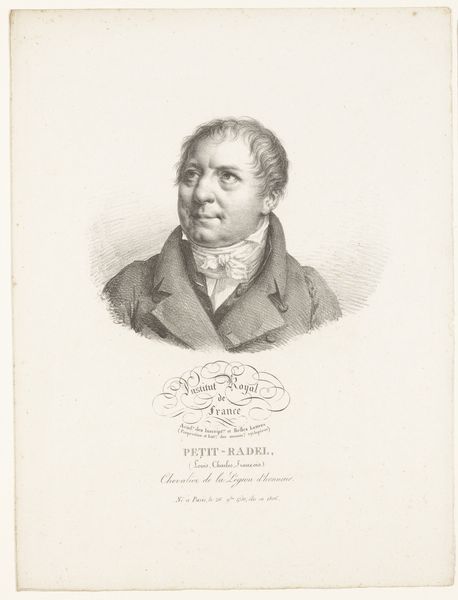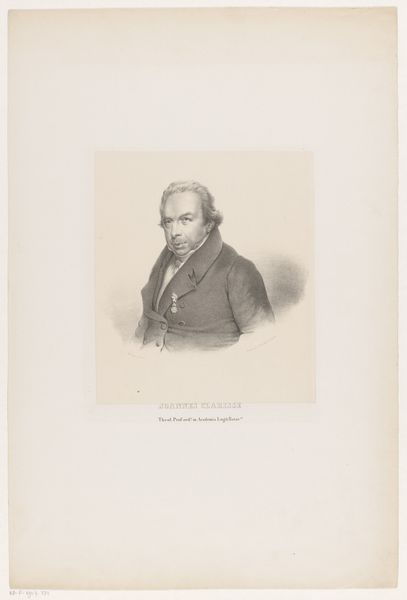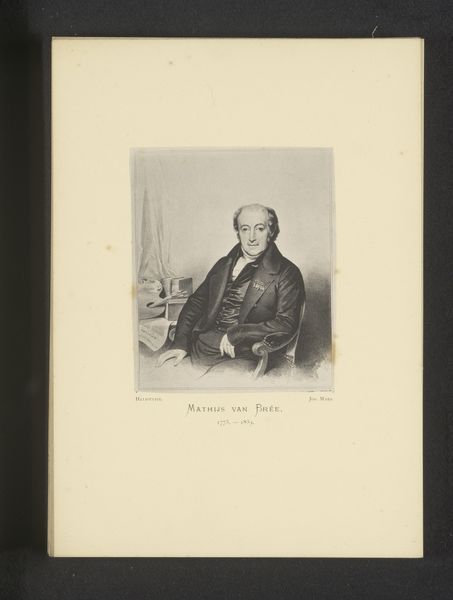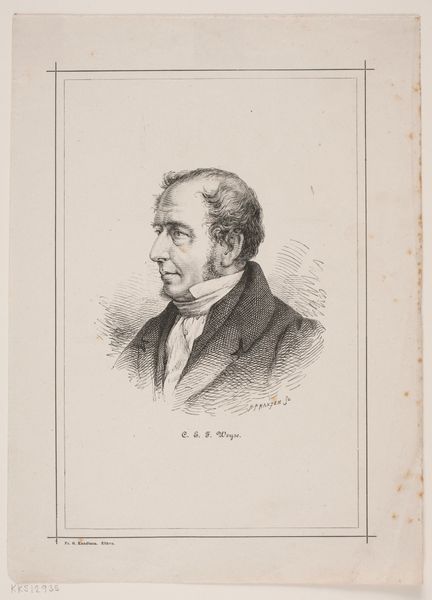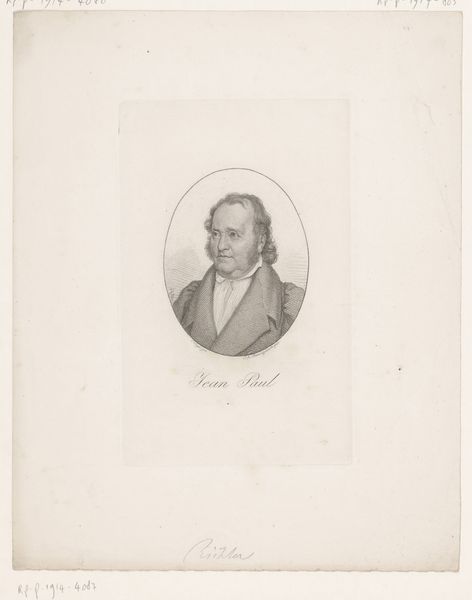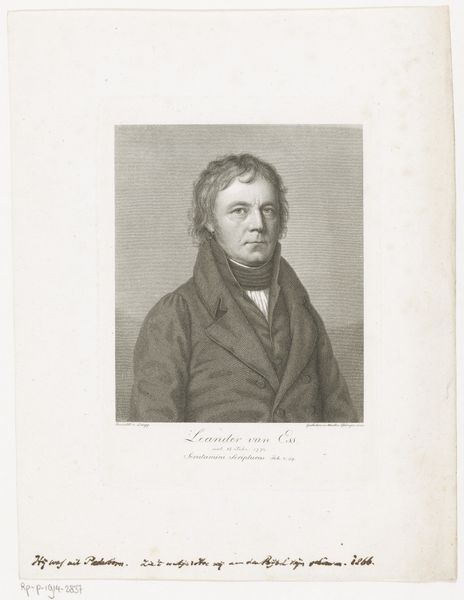
#
portrait
#
pencil drawn
#
amateur sketch
#
toned paper
#
light pencil work
#
pencil sketch
#
personal sketchbook
#
pencil drawing
#
sketchbook drawing
#
pencil work
#
sketchbook art
Dimensions: height 233 mm, width 193 mm
Copyright: Rijks Museum: Open Domain
This is Johann Jakob Laurenz Billwiller's portrait of Franz Caucig. The most striking element is the direct, almost confrontational gaze of the subject. The eyes, rendered with meticulous detail, draw us in, demanding our attention. Consider the symbolic weight of the direct gaze throughout art history. In ancient Roman portraiture, a similar gaze was used to convey authority and power. We can see its echo in the Renaissance portraits of rulers and dignitaries. Here, it speaks not just to personal character, but to a connection with historical and cultural authority. The gaze is a powerful force. It engages viewers on a subconscious level, stirring primal instincts of recognition, challenge, and even vulnerability. It is a motif that has been passed down through history, shifting in meaning. It resurfaces, evolves, and takes on new meanings in different historical contexts.
Comments
No comments
Be the first to comment and join the conversation on the ultimate creative platform.
